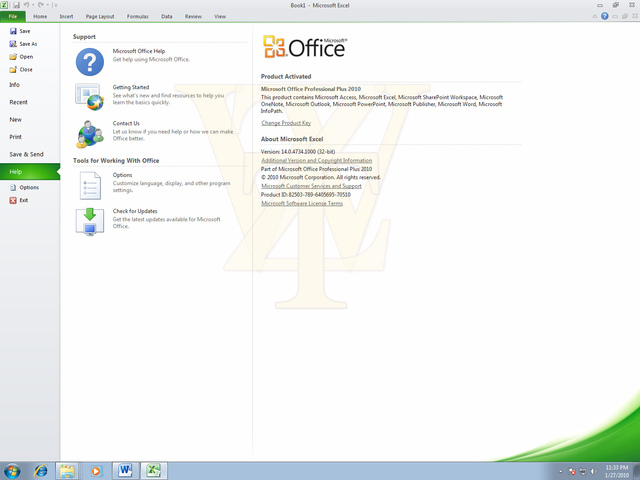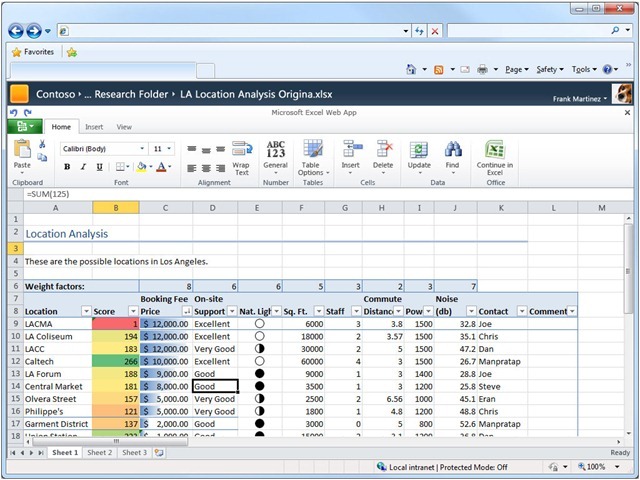
Office 2010: Advantages and disadvantages
Office 2010 leaves a round impression in the beta version available so far. Microsoft’s new Office Suite comes with many detail improvements, a consistent look and feel, close integration with Office Web Apps and Office Mobile, and improved team collaboration. In addition, it has integrated image and video editing as well as mini charts. But is that enough to make it worthwhile for companies to switch from an older version of Office to Office 2010? Forrester’s market researchers have weighed the pros and cons.
The market researchers were particularly impressed by the close link with the Office Web Apps and the improvements to the Outlook mail client – pcwelt.de had already emphasized these two innovations. According to Forrester, several companies have already announced that they intend to acquire Office in 2010.
However, some companies also wanted to look at this website to continue using alternatives such as Google Docs and Zoho. Some companies doubt that Microsoft’s new online office will work smoothly right from the start.
Other key benefits of Office 2010 include Sharepoint Workspace (which replaces the little-known Groove), which allows Sharepoint content to be edited and shared online and offline, and the integration of social media tools from sites such as LinkedIn into Outlook using the Outlook Social Connector.
The licensing model with Office 2010 will definitely become clearer
Microsoft has reduced its volume licensing program for companies to two versions: On Standard (in addition to the typical Office part applications also with Publisher, OneNote and Office Web Apps) and Professional Plus (in addition to the typical Office part applications also with OneNote, SharePoint Workspace and Office Web Apps) – compared to Office 2007 this is a reduction of 50 percent since the Ultimate and Enterprise Editions have been omitted.
New User Interface
In addition, Forrester analysts see the new user interface with the backstage area as an advantage. As well as better memory management with Office 2010 in the 64-bit version. Excel 2010 64 Bit can also open files larger than 2 gigabytes. Forrester also considers the new Sparklines to be a trump ace in corporate use.
But Forrester also sees disadvantages with Office 2010: “If you choose Office 2010 with 64 bits for performance reasons, you have to accept that old ActiveX controls and COM DLLs that were programmed for Office with 64 bits are no longer compatible with Office 2010 64 bits.
Similarly, databases (where the source code has been removed, for example the .mde, .ade and .accde files) that used to work with a 32-bit Office and are now to be upgraded to 64-bit will experience problems. Further problems can occur with Visual Basic applications written for 32 bit office, OLE and graphic rendering.
As already mentioned, Microsoft is breaking new ground with the inclusion of social networking tools, for example for LinkedIn, in the Outlook Social Connector. The old Groove, which Microsoft acquired in 2005 through the acquisition of Groove Networks, becomes the SharePoint Workspace.
The VBA (Visual Basic for Applications) programming language built into Office 2010 has also been trimmed to 64-bit by Microsoft, and the Office 2010 Object Model has also been updated.
Office 2010 leaves a very round impression in the beta version available so far
Microsoft’s new Office Suite comes with many detail improvements, a consistent look and feel, close integration with Office Web Apps and Office Mobile, and improved team collaboration. It also features integrated image and video editing as well as mini charts. But is that enough to make it worthwhile for companies to switch from an older version of Office to Office 2010? Forrester’s market researchers have weighed the pros and cons.

The market researchers were particularly impressed by the close link with the Office Web Apps and the improvements to the Outlook mail client – pcwelt.de had already emphasized these two innovations.
Office in 2010
According to Forrester, several companies have already announced that they intend to acquire Office in 2010. However, some companies also wanted to continue using alternatives such as Google Docs and Zoho. Some companies doubt that Microsoft’s new online office will work smoothly right from the start.
Other key benefits of Office 2010 include Sharepoint Workspace (which replaces the little-known Groove), which allows Sharepoint content to be edited and shared online and offline, and the integration of social media tools from sites such as LinkedIn into Outlook using the Outlook Social Connector.
The licensing model with Office 2010 will definitely become clearer: Microsoft has reduced its volume licensing program for companies to two versions: On a standard basis (with Publisher, OneNote and Office Web Apps in addition to the typical Office part applications) and Professional Plus (with OneNote, SharePoint Workspace and Office Web Apps in addition to the typical Office part applications) – compared to Office 2007, this is a reduction of 50 percent since the Ultimate and Enterprise Editions have been omitted.






